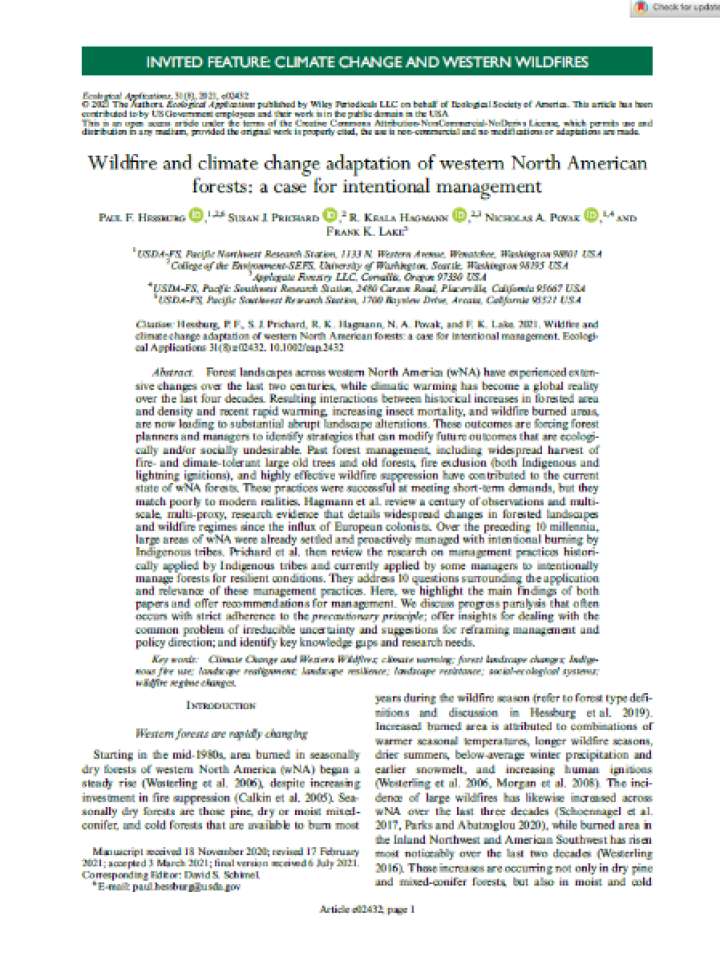Wildfire and climate change adaptation of western North American forests: a case for intentional management
This publication reviews a century of observations and multi-scale, multi-proxy research evidence that details widespread changes in forested landscapes and wildfire regimes since the influx of European colonists. Forest landscapes across western North America (wNA) have experienced extensive changes over the last two centuries, while climatic warming has become a global reality over the last 4 decades. Resulting interactions between historical increases in forested area and density and recent rapid warming, increasing insect mortality, and wildfire burned areas, are now leading to substantial abrupt landscape alterations. These outcomes are forcing forest planners and managers to identify strategies that can modify future outcomes that are ecologically and/or socially undesirable. Past forest management, including widespread harvest of fire- and climate-tolerant large old trees and old forests, fire exclusion (both Indigenous and lightning ignitions), and highly effective wildfire suppression have contributed to the current state of wNA forests. These practices were successful at meeting short-term demands, but they match poorly to modern realities.
Over the preceding 10 millennia, large areas of wNA were already settled and proactively managed with intentional burning by Indigenous tribes. This publication then reviews the research on management practices historically applied by Indigenous tribes and currently applied by some managers to intentionally manage forests for resilient conditions. It addresses ten questions surrounding the application and relevance of these management practices. Here, the authors highlight the main findings of both papers and offer recommendations for management. The authors discuss progress paralysis that often occurs with strict adherence to the precautionary principle; offer insights for dealing with the common problem of irreducible uncertainty and suggestions for reframing management and policy direction; and identify key knowledge gaps and research needs.
Explore further
